Evidence-Based Cardiology
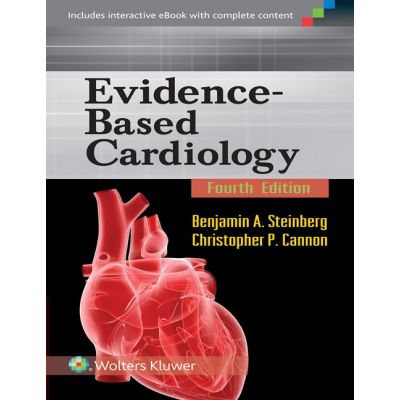
Price: 304,50 lei
Availability: in supplier's stock
Author: Benjamin A. Steinberg MD Christopher P. Cannon MD
ISBN: 9781451193305
Publisher: Lippincott Williams Wilkins
Publishing Year: 2016
Pages: 540
Dimensions: softcover
Category: CARDIOVASCULAR MEDICINE
DESCRIPTION
Get quick, portable access to the evidence you need to make effective clinical decisions! Evidence-Based Cardiology succinctly summarizes all the clinical trials that affect the practice of cardiovascular medicine, making it easy for you to implement the most appropriate diagnostic tests and treatments for your patients.
- Apply the latest knowledge on atrial fibrillation and heart failure, including novel anticoagulants, new medical therapies, new devices including ablation and resynchronization and other advanced therapies.
- Select the best interventions for acute coronary syndrome with coverage of new antiplatelet strategies, management strategy updates, and significant data on outcomes and guideline adherence.
- Navigate controversies across your entire field with in-depth chapters exploring all areas of preventive cardiology, coronary revascularization and percutaneous procedures, unstable angina/non-ST elevation myocardial infarction, ST-elevation myocardial infarction, heart failure, and arrhythmias.
- Look up all essential randomized clinical trials and understand their implications with concise summaries of trial design, study population, treatment regimen, and results, together with relevant ACC/AHA Practice Guidelines.
- Complete content with enhanced navigation
- A powerful search that pulls results from content in the book, your notes, and even the web
- Cross-linked pages, references, and more for easy navigation
- Highlighting tool for easier reference of key content throughout the text
- Ability to take and share notes with friends and colleagues
- Quick reference tabbing to save your favorite content for future use
CONTENTS
Preface
Contributors
CHAPTER 1. Preventive Cardiology: Risk Factors for Coronary Artery Disease and Primary and Secondary Prevention
Christopher P. Cannon, Benjamin A. Steinberg, and Alexander C. Fanaroff
CHOLESTEROL AND LIPIDS
Epidemiology
ACC/AHA Guidelines
Drugs
Bile Resins (e. g., Cholestyramine, Colestipol)
Fibric Acid Derivatives (e. g., Gemfibrozil, Fenofibrate)
Cholesterol Absorption Inhibitors
3-Hydroxy-3-Methylglutaryl-Coenzyme A Reductase Inhibitors (Statins)
Primary Prevention Trials
Secondary Prevention Trials
Combined Primary And Secondary Prevention Trials
Early Statin Initiation Trials
Raising HDL Cholesterol
Niacin
Cholesterol Ester Transfer Protein Inhibitors
DIET AND VITAMINS
Special Diets
Alcohol
LIFESTYLE FACTORS
Obesity
Exercise
Smoking
METABOLIC SYNDROME
DIABETES
HYPERTENSION
Epidemiology
Etiology
Diagnosis
Treatment
Non-Pharmacologic
Pharmacologic
Target Blood Pressure
NON-MODIFIABLE RISK FACTORS
Family History
Age
Gender
Genetic Markers
HORMONAL STATUS AND HORMONAL THERAPY
INFLAMMATION
C-Reactive Protein
Homocysteine and B Vitamins
Lipoprotein-Associated Phospholipase A2
Infections and Cardiovascular Disease
ANTIPLATELET DRUGS FOR PRIMARY AND SECONDARY PREVENTION
Aspirin
Primary Prevention Trials
Secondary Prevention Trials
Clopidogrel
REFERENCES
General Articles
Lipids And Cholesterol
Guidelines
Epidemiology
Primary Prevention
Early Trials
Statins In Primary Prevention
Combination Therapy In The Statin Era
Secondary Prevention
Placebo-Controlled Trials
Intensive- Versus Standard-Dose Statin Regimens In Stable CAD
Early Statin Initiation In ACS
Combined Primary And Secondary Prevention Trials
Primary And Secondary Prevention Trials In Patients With Comorbidities
Meta-Analyses and Non-Cholesterol Effects of Statins
HDL-Raising Therapies
Niacin
CETP Inhibitors
Meta-Analyses And General Studies
Novel Classes of Lipid-Lowering Agents
Antioxidants, Vitamins, Fish Oil, Chelation, Hormones
Observational Studies
Clinical Trials
Meta-Analyses
Diet
Observational Studies
Clinical Trials
Alcohol
Lifestyle
Guidelines and General Articles
Obesity And Weight Loss
Exercise
Smoking
Epidemiology
Smoking Cessation
Metabolic Syndrome and Diabetes
Epidemiology
Treatment
Hypertension
Epidemiology and Risk Factors
Studies of Treatment
Non-Pharmacologic Therapies
Medical Therapy
Diabetes And Hypertension
Invasive Therapies
Meta-Analyses
Non-Modifiable Risk Factors
Age and Genetics
Inflammation
C-Reactive Protein
Homocysteine and B Vitamins
Observational Studies
Trials And Meta-Analyses
Lipoprotein-Associated Phospholipase A2 (Lp-PLA2)
Infections and Cardiovascular Disease
Antibiotic Trials
HIV-Related Cardiovascular Risk
Miscellaneous
Antiplatelet Drugs For Primary And Secondary Prevention
Primary Prevention
Secondary Prevention
General Review Articles and Meta-Analyses
CHAPTER 2. Coronary Revascularization and Percutaneous Procedures
Christopher P. Cannon, Benjamin A. Steinberg, and Justin M. Dunn
CORONARY ANGIOGRAPHY
Indications
Flow Grade
Stenosis Morphology
PERCUTANEOUS CORONARY INTERVENTION
Uses and Indications
Operator and Hospital Volume
Procedural Details
Access
Contrast Agent
Lesion Evaluation
Balloon Angioplasty
Stenting
Medications
Aspirin
Heparin
Low-Molecular-Weight Heparin (LMWH)
Direct Thrombin Inhibitors
Thienopyridines/Adp Receptor Antagonists
Glycoprotein IIB/IIIA Inhibitors
Abciximab (Reopro)
Eptifibatide (Integrilin)
Tirofiban (Aggrastat)
Applications of PCI
Stable Angina
Unstable Angina/Non–ST Elevation Myocardial Infarction
Acute ST-Elevation Myocardial Infarction
After Thrombolytic Therapy
Stenting Versus Percutaneous Transluminal Coronary Angioplasty: Major Trials
Direct Stenting Versus Balloon Predilatation
Repeated Intervention
Complications
Early Complications
Later Complications
Stent Thrombosis
Restenosis
Renal Dysfunction
Other Postprocedural Complications
Treatment and Prevention of Restenosis
Drug Studies
Radiation Therapy
Drug-Eluting Stents
Directional Atherectomy
Rotational Atherectomy
Prevention of Distal Embolization
Thrombectomy
Distal Protection
CORONARY ARTERY BYPASS SURGERY
Coronary Artery Bypass Surgery versus Medical Therapy
Coronary Artery Bypass Surgery versus Percutaneous Coronary Intervention
Internal Mammary Artery
Saphenous Vein Grafts
TRANSCATHETER AORTIC VALVE REPLACEMENT (TAVR)
Balloon-Expandable TAVR
Self-Expanding TAVR
REFERENCES
Guidelines and Classification
Operator and Hospital Characteristics
Catheterization Technique
Contrast Agents
Lesion Evaluation (Fractional Flow Reserve, Intravascular Ultrasound)
Comparison of Revascularization with Medical Therapy
Stent Studies
Early Stent Comparisons
Provisional Stenting
Direct Stenting
Drug-Eluting Stents
Additional Devices/Techniques
Cutting Balloon
Atherectomy Studies
Radiation Therapy
Thrombectomy
Distal Protection
Adjunctive Pharmacologic Therapy
Aspirin
Heparin
Low-Molecular-Weight Heparin
Thienopyridines
Glycoprotein IIB/IIIA Inhibitors
Thrombin Inhibitors
Special Situations
Chronic Total Occlusions
Bypass Graft Lesions
Small Vessels
Diabetes
Complications
Postintervention CK/CK-MB And Troponin Studies
Stent Thrombosis
Other Complications
Coronary Restenosis
Repeat Percutaneous Coronary Intervention For Restenosis After Percutaneous Transluminal Coronary Angiography
Effect Of Stent Design
Drug Studies
Coronary Artery Bypass Graft Surgery
Coronary Artery Bypass Graft Surgery Versus Medical Therapy
Coronary Artery Bypass Graft Surgery Versus Percutaneous Transluminal Coronary Angiography
Graft And Patency
Transcatheter Aortic Valve Replacement (TAVR)
CHAPTER 3. Unstable Angina/Non-ST Elevation MI
Christopher P. Cannon, Benjamin A. Steinberg, Matthew W. Sherwood
EPIDEMIOLOGY
PATHOPHYSIOLOGY
CLASSIFICATION
Unstable Angina
Non–ST Elevation Myocardial Infarction
CLINICAL AND LABORATORY FINDINGS
History and Symptoms
Electrocardiogram
Cardiac Enzymes
Creatine Kinase And Creatine Kinase-MB
Troponins T And I
Myoglobin
Estimation Of Early Risk At Presentation
TREATMENT
Aspirin
ADP Receptor Antagonists
PAR-1 Receptor Antagonists
Heparin
Low-Molecular-Weight Heparins
Direct Thrombin Inhibitors
Factor XA Inhibitors
Glycoprotein IIB/IIIA Inhibitors
Intravenous Agents
Oral Agents
Thrombolytic Therapy
Anti-Ischemic Medications
β-Blockers
Nitrates
Calcium-channel Blockers
3-Hydroxy-3-methylglutaryl Coenzyme A Reductase Inhibitors (Statins)
Invasive Strategy
Coronary Artery Bypass Graft Surgery
NONINVASIVE EVALUATION
Exercise Treadmill Test
Exercise Treadmill Testing With Nuclear Imaging
Pharmacologic Stress Testing With Imaging
Echocardiography
Coronary Computerized Tomography Angiography
PROGNOSIS AND BIOMARKERS
Unstable Angina
Non–St Elevation Myocardial Infarction
Prior Aspirin Use (Aspirin Failures)
Electrocardiography
Troponin Levels
C-Reactive Protein
B-Type Natriuretic Peptide
REFERENCES
Review Articles and Pathophysiology
Drugs and Studies
Aspirin
Thienopyridines
PAR-1 Receptor Antagonists
Unfractionated Heparin And Warfarin
Low-Molecular-Weight Heparins
Anti-Ischemic Medications
Direct Thrombin Inhibitors
Factor Xa Inhibitors
Glycoprotein IIB/IIIA Inhibitors
Thrombolytics
Invasive versus Conservative Management
Non-Invasive Assessment and Prognosis
Clinical Or General Analyses
Biomarkers
Review Articles And Multimarker Studies
Troponins
High Sensitivity Troponins
Inflammatory Markers
B-Type Natriuretic Peptide
Specific Tests: Angiography, ECG, And Holter
CHAPTER 4. ST-Elevation Myocardial Infarction
Christopher P. Cannon, Benjamin A. Steinberg, and Justin M. Dunn
EPIDEMIOLOGY
PATHOGENESIS
DIAGNOSIS
Chest Pain
Electrocardiography
Echocardiography
Biomarkers
TREATMENT
Aspirin
P2Y12 Inhibitors
β-Blockers
Angiotensin-Converting Enzyme Inhibitors
Aldosterone Antagonism
Thrombolytic Therapy
Indications For Thrombolysis
Contraindications
Common Fibrinolytic Agents
Streptokinase
Tissue Plasminogen Activator
Reteplase
Tenecteplase
Prognostic Indicators
Percutaneous Coronary Intervention
Primary Angioplasty
Procedural Volume
Primary Angioplasty versus Thrombolysis
Rescue Angioplasty
Routine PCI (After Thrombolysis) Versus Delayed or Conservative Management
Facilitated Percutaneous Coronary Intervention
Cardiogenic Shock
Stenting In STEMI
Antithrombotic Regimens
Heparin
Enoxaparin
Fondaparinux
Direct Thrombin Inhibitors
Oral Anticoagulants
Intravenous Glycoprotein IIB/IIIA Inhibitors
Use in Primary PCI
Glycoprotein IIb/IIIa Inhibition plus Reduced-Dose Thrombolysis
Other Therapies
Nitrates
Calcium-Channel Blockers
Antiarrhythmics
Magnesium
Glucose–Insulin–Potassium
Intra-Aortic Balloon Pump
RIGHT VENTRICULAR INFARCTION
Diagnosis
Complications
Treatment
COMPLICATIONS OF STEMI
Early
Intermediate
Late
PROGNOSIS AND RISK STRATIFICATION AFTER MYOCARDIAL INFARCTION
Uncomplicated STEMI
Complicated Course
Specific Tests
REFERENCES
General Review Articles and Guidelines
Epidemiology
Pathogenesis
Diagnosis
Chest Pain And Symptoms
Electrocardiography
Biomarkers
Pre-Hospital And Emergency Department Evaluation
Treatment
Aspirin
P2Y12 Inhibitors
β-Blockers
Angiotensin-Converting Enzyme Inhibitors
Reviews and Meta-Analyses
Studies
Thrombolytic Therapy
Review Articles and Meta-Analyses
Thrombolytic Comparative Studies
Prehospital Thrombolysis Studies
Percutaneous Coronary Intervention
Reviews
Meta-Analyses
Primary PCI
PCI After Thrombolysis
Rescue PCI
Operator and Hospital Volumes
Stenting in STEMI
Antithrombotic Regimens
Antithrombins
Direct Thrombin Inhibitors
Oral Anticoagulants
Glycoprotein IIb/IIIa Inhibitors
Glycoprotein IIb/IIIa Inhibitors And Reduced-Dose Thrombolysis
Other Therapies
Nitrates
Calcium-Channel Blockers
Antiarrhythmics
Magnesium
Glucose–Insulin–Potassium (GIK)
Infarct Types
Left Ventricular Infarctions
Right Ventricular Infarction
Treatment Of Cardiogenic Shock
Percutaneous Assist Devices
Assessment And Prognosis
Reviews And Meta-Analyses
Electrocardiography, Arrhythmias, And Conduction Disease
Exercise Testing
Echocardiography And Other Noninvasive Tests
Flow, Vessel Patency, And Angiography
Other Prognostic Factors
Complications Of Myocardial Infarction
Arrhythmias, Bundle Branch Block
Cardiac Rupture
Intracranial Hemorrhage In Thrombolysis
Reocclusion, Recurrent Ischemia, And Reinfarction
Left Ventricular Thrombi
Valvular Damage And Septal Defects
CHAPTER 5. Heart Failure
Benjamin A. Steinberg and Christopher P. Cannon
EPIDEMIOLOGY
HISTORY AND PHYSICAL EXAMINATION
ETIOLOGY
DIAGNOSTIC TESTING
TREATMENT
Treatment of Acute Heart Failure
Treatment of Chronic Heart Failure
Angiotensin-Converting Enzyme Inhibitors
Angiotensin II–Receptor Antagonists
Dual Ras Blockade (ACE/ARB)
β-blockers
Diuretics
Aldosterone Blockers
Digoxin
Vasodilators
Hydralazine and Isosorbide Dinitrate
Calcium-channel Blockers
Amiodarone
Emerging Medical Therapies
Biventricular Pacing
Surgical Therapies
Left Ventricular Assist Device
Coronary Artery Bypass Graft Surgery
Cardiac Transplantation
Other Surgical Treatments
Additional Therapeutic Considerations
Hemodynamic Monitoring
Exercise Training And Rehabilitation
Prevention Of Sudden Cardiac Death
REFERENCES
Guidelines and Reviews
Epidemiology
Diagnosis and Prognosis
Physical Examination
Diagnostic Testing
Noninvasive Testing
Treatment
Angiotensin-Converting Enzyme Inhibitors And Angiotensin-II Receptor Blockers
Meta-analyses
Studies
β-blockers
Review Articles and Meta-analyses
Carvedilol Studies
Other Studies
Diuretics And Aldosertone Antagonists
Digoxin
Vasodilators
Inotropic And Other Agents
Mechanical Assist Devices And Surgical Options
Invasive Therapy
Additional Therapeutic Considerations
Anticoagulation
Exercise
CHAPTER 6. Arrhythmias
Benjamin A. Steinberg, Christopher P. Cannon
ATRIAL ARRHYTHMIAS
Epidemiology
Natural History
Etiologies and Risk Factors
Stroke Risk Factors
Treatment
Rate Versus Rhythm Control
Pharmacologic Agents For Control Of The Ventricular Rate
Pharmacologic Agents For The Acute Conversion Of Atrial Fibrillation
Intravenous Agents
Oral Agents
Pharmacologic Agents For Long-Term Maintenance Of Sinus Rhythm
Catheter And Surgical Ablation
Catheter Ablation
Surgical Ablation
Electrical Cardioversion
Type and Amount of Energy
Anticoagulation Before and After Cardioversion
Prevention Of Thromboembolism
Long-Term Anticoagulation
Non-Vitamin K Oral Anticoagulants
Other Strategies To Prevent Thromboembolism
Other Treatment Measures
Atrial Fibrillation Prevention After Cardiac Surgery
VENTRICULAR ARRHYTHMIAS
Immediate Therapy: Automated External Defibrillators
Immediate Therapy: Intravenous Amiodarone
Secondary-Prevention Trials: Drugs Versus Implantable Cardioverter Defibrillators
Primary-Prevention Trials: Antiarrhythmic Drugs
Primary-Prevention Trials: Drugs Versus Implantable Cardioverter Defibrillators
Primary-Prevention Trials: Nonischemic Cardiomyopathy Patients
Studies Of emerging Tachyarrhythmia Therapies
CARDIAC PACING STUDIES
Pacemaker Mode Selection Trials
Pacing For Vasovagal Syncope
Pacing For Prevention Of Atrial Fibrillation
Resynchronization Therapy For Congestive Heart Failure
REFERENCES
Atrial Fibrillation
Guidelines
Epidemiology
Risk Stratification
Rate Versus Rhythm Control
Drug Trials For Rate And Rhyhtm Control In Atrial Fibrillation
Catheter And Surgical Ablation
Catheter Ablation
Surgical Ablation
Electrical Cardioversion And Pericardioversion Anticoagulation
Long-Term Anticoagulation
Non-Vitamin K Oral Anticoagulants
Non-Pharmacologic Stroke Prevention In AF
Atrial Fibrillation Prevention After Surgery
Ventricular Arrhythmias
Guidelines
Immediate Therapy: Automated External Defibrillators
Immediate Therapy: Intravenous Amiodarone
Secondary-Prevention Trials: Drugs Versus Implantable Cardioverter Defibrillators
Primary-Prevention Trials: Antiarrhythmic Drugs
Primary-Prevention Trials: Drugs Versus Implantable Cardioverter Defibrillators
Primary-Prevention Trials: Nonischemic Cardiomyopathy Patients
Studies Of Emerging Tachyarrhythmia Therpaies
Cardiac Pacing Studies
Guidelines
Mode Selection Trials
Pacing For Vasovagal Syncope
Pacing For Prevention Of Atrial Fibrillation
Resynchronization Therapy For Congestive Heart Failure
Index
Preface
Contributors
CHAPTER 1. Preventive Cardiology: Risk Factors for Coronary Artery Disease and Primary and Secondary Prevention
Christopher P. Cannon, Benjamin A. Steinberg, and Alexander C. Fanaroff
CHOLESTEROL AND LIPIDS
Epidemiology
ACC/AHA Guidelines
Drugs
Bile Resins (e. g., Cholestyramine, Colestipol)
Fibric Acid Derivatives (e. g., Gemfibrozil, Fenofibrate)
Cholesterol Absorption Inhibitors
3-Hydroxy-3-Methylglutaryl-Coenzyme A Reductase Inhibitors (Statins)
Primary Prevention Trials
Secondary Prevention Trials
Combined Primary And Secondary Prevention Trials
Early Statin Initiation Trials
Raising HDL Cholesterol
Niacin
Cholesterol Ester Transfer Protein Inhibitors
DIET AND VITAMINS
Special Diets
Alcohol
LIFESTYLE FACTORS
Obesity
Exercise
Smoking
METABOLIC SYNDROME
DIABETES
HYPERTENSION
Epidemiology
Etiology
Diagnosis
Treatment
Non-Pharmacologic
Pharmacologic
Target Blood Pressure
NON-MODIFIABLE RISK FACTORS
Family History
Age
Gender
Genetic Markers
HORMONAL STATUS AND HORMONAL THERAPY
INFLAMMATION
C-Reactive Protein
Homocysteine and B Vitamins
Lipoprotein-Associated Phospholipase A2
Infections and Cardiovascular Disease
ANTIPLATELET DRUGS FOR PRIMARY AND SECONDARY PREVENTION
Aspirin
Primary Prevention Trials
Secondary Prevention Trials
Clopidogrel
REFERENCES
General Articles
Lipids And Cholesterol
Guidelines
Epidemiology
Primary Prevention
Early Trials
Statins In Primary Prevention
Combination Therapy In The Statin Era
Secondary Prevention
Placebo-Controlled Trials
Intensive- Versus Standard-Dose Statin Regimens In Stable CAD
Early Statin Initiation In ACS
Combined Primary And Secondary Prevention Trials
Primary And Secondary Prevention Trials In Patients With Comorbidities
Meta-Analyses and Non-Cholesterol Effects of Statins
HDL-Raising Therapies
Niacin
CETP Inhibitors
Meta-Analyses And General Studies
Novel Classes of Lipid-Lowering Agents
Antioxidants, Vitamins, Fish Oil, Chelation, Hormones
Observational Studies
Clinical Trials
Meta-Analyses
Diet
Observational Studies
Clinical Trials
Alcohol
Lifestyle
Guidelines and General Articles
Obesity And Weight Loss
Exercise
Smoking
Epidemiology
Smoking Cessation
Metabolic Syndrome and Diabetes
Epidemiology
Treatment
Hypertension
Epidemiology and Risk Factors
Studies of Treatment
Non-Pharmacologic Therapies
Medical Therapy
Diabetes And Hypertension
Invasive Therapies
Meta-Analyses
Non-Modifiable Risk Factors
Age and Genetics
Inflammation
C-Reactive Protein
Homocysteine and B Vitamins
Observational Studies
Trials And Meta-Analyses
Lipoprotein-Associated Phospholipase A2 (Lp-PLA2)
Infections and Cardiovascular Disease
Antibiotic Trials
HIV-Related Cardiovascular Risk
Miscellaneous
Antiplatelet Drugs For Primary And Secondary Prevention
Primary Prevention
Secondary Prevention
General Review Articles and Meta-Analyses
CHAPTER 2. Coronary Revascularization and Percutaneous Procedures
Christopher P. Cannon, Benjamin A. Steinberg, and Justin M. Dunn
CORONARY ANGIOGRAPHY
Indications
Flow Grade
Stenosis Morphology
PERCUTANEOUS CORONARY INTERVENTION
Uses and Indications
Operator and Hospital Volume
Procedural Details
Access
Contrast Agent
Lesion Evaluation
Balloon Angioplasty
Stenting
Medications
Aspirin
Heparin
Low-Molecular-Weight Heparin (LMWH)
Direct Thrombin Inhibitors
Thienopyridines/Adp Receptor Antagonists
Glycoprotein IIB/IIIA Inhibitors
Abciximab (Reopro)
Eptifibatide (Integrilin)
Tirofiban (Aggrastat)
Applications of PCI
Stable Angina
Unstable Angina/Non–ST Elevation Myocardial Infarction
Acute ST-Elevation Myocardial Infarction
After Thrombolytic Therapy
Stenting Versus Percutaneous Transluminal Coronary Angioplasty: Major Trials
Direct Stenting Versus Balloon Predilatation
Repeated Intervention
Complications
Early Complications
Later Complications
Stent Thrombosis
Restenosis
Renal Dysfunction
Other Postprocedural Complications
Treatment and Prevention of Restenosis
Drug Studies
Radiation Therapy
Drug-Eluting Stents
Directional Atherectomy
Rotational Atherectomy
Prevention of Distal Embolization
Thrombectomy
Distal Protection
CORONARY ARTERY BYPASS SURGERY
Coronary Artery Bypass Surgery versus Medical Therapy
Coronary Artery Bypass Surgery versus Percutaneous Coronary Intervention
Internal Mammary Artery
Saphenous Vein Grafts
TRANSCATHETER AORTIC VALVE REPLACEMENT (TAVR)
Balloon-Expandable TAVR
Self-Expanding TAVR
REFERENCES
Guidelines and Classification
Operator and Hospital Characteristics
Catheterization Technique
Contrast Agents
Lesion Evaluation (Fractional Flow Reserve, Intravascular Ultrasound)
Comparison of Revascularization with Medical Therapy
Stent Studies
Early Stent Comparisons
Provisional Stenting
Direct Stenting
Drug-Eluting Stents
Additional Devices/Techniques
Cutting Balloon
Atherectomy Studies
Radiation Therapy
Thrombectomy
Distal Protection
Adjunctive Pharmacologic Therapy
Aspirin
Heparin
Low-Molecular-Weight Heparin
Thienopyridines
Glycoprotein IIB/IIIA Inhibitors
Thrombin Inhibitors
Special Situations
Chronic Total Occlusions
Bypass Graft Lesions
Small Vessels
Diabetes
Complications
Postintervention CK/CK-MB And Troponin Studies
Stent Thrombosis
Other Complications
Coronary Restenosis
Repeat Percutaneous Coronary Intervention For Restenosis After Percutaneous Transluminal Coronary Angiography
Effect Of Stent Design
Drug Studies
Coronary Artery Bypass Graft Surgery
Coronary Artery Bypass Graft Surgery Versus Medical Therapy
Coronary Artery Bypass Graft Surgery Versus Percutaneous Transluminal Coronary Angiography
Graft And Patency
Transcatheter Aortic Valve Replacement (TAVR)
CHAPTER 3. Unstable Angina/Non-ST Elevation MI
Christopher P. Cannon, Benjamin A. Steinberg, Matthew W. Sherwood
EPIDEMIOLOGY
PATHOPHYSIOLOGY
CLASSIFICATION
Unstable Angina
Non–ST Elevation Myocardial Infarction
CLINICAL AND LABORATORY FINDINGS
History and Symptoms
Electrocardiogram
Cardiac Enzymes
Creatine Kinase And Creatine Kinase-MB
Troponins T And I
Myoglobin
Estimation Of Early Risk At Presentation
TREATMENT
Aspirin
ADP Receptor Antagonists
PAR-1 Receptor Antagonists
Heparin
Low-Molecular-Weight Heparins
Direct Thrombin Inhibitors
Factor XA Inhibitors
Glycoprotein IIB/IIIA Inhibitors
Intravenous Agents
Oral Agents
Thrombolytic Therapy
Anti-Ischemic Medications
β-Blockers
Nitrates
Calcium-channel Blockers
3-Hydroxy-3-methylglutaryl Coenzyme A Reductase Inhibitors (Statins)
Invasive Strategy
Coronary Artery Bypass Graft Surgery
NONINVASIVE EVALUATION
Exercise Treadmill Test
Exercise Treadmill Testing With Nuclear Imaging
Pharmacologic Stress Testing With Imaging
Echocardiography
Coronary Computerized Tomography Angiography
PROGNOSIS AND BIOMARKERS
Unstable Angina
Non–St Elevation Myocardial Infarction
Prior Aspirin Use (Aspirin Failures)
Electrocardiography
Troponin Levels
C-Reactive Protein
B-Type Natriuretic Peptide
REFERENCES
Review Articles and Pathophysiology
Drugs and Studies
Aspirin
Thienopyridines
PAR-1 Receptor Antagonists
Unfractionated Heparin And Warfarin
Low-Molecular-Weight Heparins
Anti-Ischemic Medications
Direct Thrombin Inhibitors
Factor Xa Inhibitors
Glycoprotein IIB/IIIA Inhibitors
Thrombolytics
Invasive versus Conservative Management
Non-Invasive Assessment and Prognosis
Clinical Or General Analyses
Biomarkers
Review Articles And Multimarker Studies
Troponins
High Sensitivity Troponins
Inflammatory Markers
B-Type Natriuretic Peptide
Specific Tests: Angiography, ECG, And Holter
CHAPTER 4. ST-Elevation Myocardial Infarction
Christopher P. Cannon, Benjamin A. Steinberg, and Justin M. Dunn
EPIDEMIOLOGY
PATHOGENESIS
DIAGNOSIS
Chest Pain
Electrocardiography
Echocardiography
Biomarkers
TREATMENT
Aspirin
P2Y12 Inhibitors
β-Blockers
Angiotensin-Converting Enzyme Inhibitors
Aldosterone Antagonism
Thrombolytic Therapy
Indications For Thrombolysis
Contraindications
Common Fibrinolytic Agents
Streptokinase
Tissue Plasminogen Activator
Reteplase
Tenecteplase
Prognostic Indicators
Percutaneous Coronary Intervention
Primary Angioplasty
Procedural Volume
Primary Angioplasty versus Thrombolysis
Rescue Angioplasty
Routine PCI (After Thrombolysis) Versus Delayed or Conservative Management
Facilitated Percutaneous Coronary Intervention
Cardiogenic Shock
Stenting In STEMI
Antithrombotic Regimens
Heparin
Enoxaparin
Fondaparinux
Direct Thrombin Inhibitors
Oral Anticoagulants
Intravenous Glycoprotein IIB/IIIA Inhibitors
Use in Primary PCI
Glycoprotein IIb/IIIa Inhibition plus Reduced-Dose Thrombolysis
Other Therapies
Nitrates
Calcium-Channel Blockers
Antiarrhythmics
Magnesium
Glucose–Insulin–Potassium
Intra-Aortic Balloon Pump
RIGHT VENTRICULAR INFARCTION
Diagnosis
Complications
Treatment
COMPLICATIONS OF STEMI
Early
Intermediate
Late
PROGNOSIS AND RISK STRATIFICATION AFTER MYOCARDIAL INFARCTION
Uncomplicated STEMI
Complicated Course
Specific Tests
REFERENCES
General Review Articles and Guidelines
Epidemiology
Pathogenesis
Diagnosis
Chest Pain And Symptoms
Electrocardiography
Biomarkers
Pre-Hospital And Emergency Department Evaluation
Treatment
Aspirin
P2Y12 Inhibitors
β-Blockers
Angiotensin-Converting Enzyme Inhibitors
Reviews and Meta-Analyses
Studies
Thrombolytic Therapy
Review Articles and Meta-Analyses
Thrombolytic Comparative Studies
Prehospital Thrombolysis Studies
Percutaneous Coronary Intervention
Reviews
Meta-Analyses
Primary PCI
PCI After Thrombolysis
Rescue PCI
Operator and Hospital Volumes
Stenting in STEMI
Antithrombotic Regimens
Antithrombins
Direct Thrombin Inhibitors
Oral Anticoagulants
Glycoprotein IIb/IIIa Inhibitors
Glycoprotein IIb/IIIa Inhibitors And Reduced-Dose Thrombolysis
Other Therapies
Nitrates
Calcium-Channel Blockers
Antiarrhythmics
Magnesium
Glucose–Insulin–Potassium (GIK)
Infarct Types
Left Ventricular Infarctions
Right Ventricular Infarction
Treatment Of Cardiogenic Shock
Percutaneous Assist Devices
Assessment And Prognosis
Reviews And Meta-Analyses
Electrocardiography, Arrhythmias, And Conduction Disease
Exercise Testing
Echocardiography And Other Noninvasive Tests
Flow, Vessel Patency, And Angiography
Other Prognostic Factors
Complications Of Myocardial Infarction
Arrhythmias, Bundle Branch Block
Cardiac Rupture
Intracranial Hemorrhage In Thrombolysis
Reocclusion, Recurrent Ischemia, And Reinfarction
Left Ventricular Thrombi
Valvular Damage And Septal Defects
CHAPTER 5. Heart Failure
Benjamin A. Steinberg and Christopher P. Cannon
EPIDEMIOLOGY
HISTORY AND PHYSICAL EXAMINATION
ETIOLOGY
DIAGNOSTIC TESTING
TREATMENT
Treatment of Acute Heart Failure
Treatment of Chronic Heart Failure
Angiotensin-Converting Enzyme Inhibitors
Angiotensin II–Receptor Antagonists
Dual Ras Blockade (ACE/ARB)
β-blockers
Diuretics
Aldosterone Blockers
Digoxin
Vasodilators
Hydralazine and Isosorbide Dinitrate
Calcium-channel Blockers
Amiodarone
Emerging Medical Therapies
Biventricular Pacing
Surgical Therapies
Left Ventricular Assist Device
Coronary Artery Bypass Graft Surgery
Cardiac Transplantation
Other Surgical Treatments
Additional Therapeutic Considerations
Hemodynamic Monitoring
Exercise Training And Rehabilitation
Prevention Of Sudden Cardiac Death
REFERENCES
Guidelines and Reviews
Epidemiology
Diagnosis and Prognosis
Physical Examination
Diagnostic Testing
Noninvasive Testing
Treatment
Angiotensin-Converting Enzyme Inhibitors And Angiotensin-II Receptor Blockers
Meta-analyses
Studies
β-blockers
Review Articles and Meta-analyses
Carvedilol Studies
Other Studies
Diuretics And Aldosertone Antagonists
Digoxin
Vasodilators
Inotropic And Other Agents
Mechanical Assist Devices And Surgical Options
Invasive Therapy
Additional Therapeutic Considerations
Anticoagulation
Exercise
CHAPTER 6. Arrhythmias
Benjamin A. Steinberg, Christopher P. Cannon
ATRIAL ARRHYTHMIAS
Epidemiology
Natural History
Etiologies and Risk Factors
Stroke Risk Factors
Treatment
Rate Versus Rhythm Control
Pharmacologic Agents For Control Of The Ventricular Rate
Pharmacologic Agents For The Acute Conversion Of Atrial Fibrillation
Intravenous Agents
Oral Agents
Pharmacologic Agents For Long-Term Maintenance Of Sinus Rhythm
Catheter And Surgical Ablation
Catheter Ablation
Surgical Ablation
Electrical Cardioversion
Type and Amount of Energy
Anticoagulation Before and After Cardioversion
Prevention Of Thromboembolism
Long-Term Anticoagulation
Non-Vitamin K Oral Anticoagulants
Other Strategies To Prevent Thromboembolism
Other Treatment Measures
Atrial Fibrillation Prevention After Cardiac Surgery
VENTRICULAR ARRHYTHMIAS
Immediate Therapy: Automated External Defibrillators
Immediate Therapy: Intravenous Amiodarone
Secondary-Prevention Trials: Drugs Versus Implantable Cardioverter Defibrillators
Primary-Prevention Trials: Antiarrhythmic Drugs
Primary-Prevention Trials: Drugs Versus Implantable Cardioverter Defibrillators
Primary-Prevention Trials: Nonischemic Cardiomyopathy Patients
Studies Of emerging Tachyarrhythmia Therapies
CARDIAC PACING STUDIES
Pacemaker Mode Selection Trials
Pacing For Vasovagal Syncope
Pacing For Prevention Of Atrial Fibrillation
Resynchronization Therapy For Congestive Heart Failure
REFERENCES
Atrial Fibrillation
Guidelines
Epidemiology
Risk Stratification
Rate Versus Rhythm Control
Drug Trials For Rate And Rhyhtm Control In Atrial Fibrillation
Catheter And Surgical Ablation
Catheter Ablation
Surgical Ablation
Electrical Cardioversion And Pericardioversion Anticoagulation
Long-Term Anticoagulation
Non-Vitamin K Oral Anticoagulants
Non-Pharmacologic Stroke Prevention In AF
Atrial Fibrillation Prevention After Surgery
Ventricular Arrhythmias
Guidelines
Immediate Therapy: Automated External Defibrillators
Immediate Therapy: Intravenous Amiodarone
Secondary-Prevention Trials: Drugs Versus Implantable Cardioverter Defibrillators
Primary-Prevention Trials: Antiarrhythmic Drugs
Primary-Prevention Trials: Drugs Versus Implantable Cardioverter Defibrillators
Primary-Prevention Trials: Nonischemic Cardiomyopathy Patients
Studies Of Emerging Tachyarrhythmia Therpaies
Cardiac Pacing Studies
Guidelines
Mode Selection Trials
Pacing For Vasovagal Syncope
Pacing For Prevention Of Atrial Fibrillation
Resynchronization Therapy For Congestive Heart Failure
Index
Book categories
-Special order
-Soon to come
-Publishers
-Promo
-Callisto Publications
-New books
-- 141,75 leiMRP: 178,50 lei
- 147,00 lei
- 1795,50 leiMRP: 1890,00 lei
Promotions
-- 73,50 leiMRP: 735,00 lei
- 67,20 leiMRP: 672,00 lei
- 404,25 leiMRP: 735,00 lei


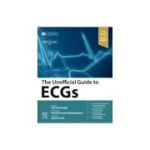

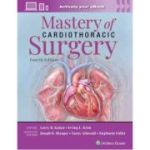


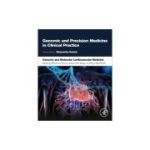



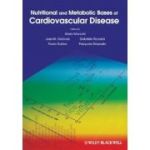
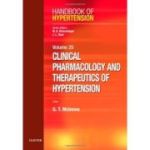
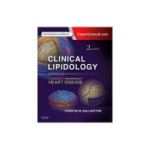

OUR VISITORS OPINIONS